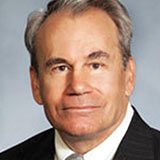The recent bond bull market started 32 years ago in 1981 when the interest rate on the 10-year US Treasury Bond was a whopping 15.8%, observes J. Royden Ward, editor of Cabot Benjamin Graham Value Investor.
We could be headed into a new bear market in bonds. The 1.4% yield seen last year is the lowest since the 10-year bond was first offered in 1912. And if the yield on the 10-year bond rises to its 102-year average yield of 6.4%, most bond prices will decline noticeably.
Ironically, my bearish bond forecast is precipitated by positive economic trends in the US. Based on the past, when economic factors improve, interest rates rise and bond prices fall.
I do not like bond funds or open-ended bond ETFs. If bond prices continue to decline during the next several years (or decades), most bond funds and ETFs will also fall.
You can make money, though, in the safe haven of the bond market, despite the current Treasury bond environment. With bond laddering, you buy bonds with various expiration dates. The bond issuer will pay you the full principal amount of your bond when your bond expires.
However, bond denominations are often in the $10,000 range, which can be prohibitive when assembling a diversified portfolio of bond holdings.
Defined-maturity funds offer an interesting solution. They seek to strike a middle ground between bonds and bond funds.
Like bonds, these funds mature on a specified date and return the capital to shareholders. Like bond funds, they are professionally managed and benefit from the economies of scale that a large portfolio offers.
Defined-maturity funds mature during the year listed in their names. A big advantage of the termination dates is the ability to manage interest rate risk.
You can build the equivalent of a bond ladder by investing in defined-maturity funds with different maturity dates. This allows you to stagger your exposure to changing interest rates instead of relying on forecasts that may or may not prove to be correct.
Guggenheim offers corporate bond and high-yield corporate bond ETFs, known as BulletShares. Since these are exchange-traded funds, they can be bought and sold just like stocks through any broker throughout the trading day. There is no minimum investment beyond the prevailing share price.
Bond ETF shares may trade at a premium or discount to net asset value. The funds are never closed to new investors prior to termination. Guggenheim’s expense ratios are 0.24% for the corporate bond funds and 0.42% for the high-yield corporate bond funds.
Par value for the Guggenheim BulletShare Corporate ETFs (BSCE) is $20.00 and par value for the Guggenheim BulletShare High Yield Corporate ETFs (BSJE) is $25.00.
The amount received by Guggenheim will hopefully be higher than par value, but that depends totally on the bond market at the time.
Therefore, we cannot calculate the amount that we will receive when an ETF reaches its maturity and proceeds are distributed (in late December of the ETF maturity date).
I recommend investing in Guggenheim defined-maturity ETFs to fulfill part of the defensive allocation in your portfolio. I advise investing in one-year, two-year, three-year, four-year, and five-year bond ETFs.
A four or five-year ladder works best when interest rates are rising. The interest yields won’t be great, but your yields will increase with each passing year.
When your one-year bond expires a year from now, you will be able to replace it with a four- or five-year bond with a higher yield, even if rates don’t rise.
You will not want to replace your one-year bond with another one-year bond because then your new one-year bond and your old two-year bond will become due one year from now at the same time.
Subscribe to J. Royden Ward's Cabot Benjamin Graham Value Investor here…
More from MoneyShow.com:
A 'Preferred' Way to Generate Income










